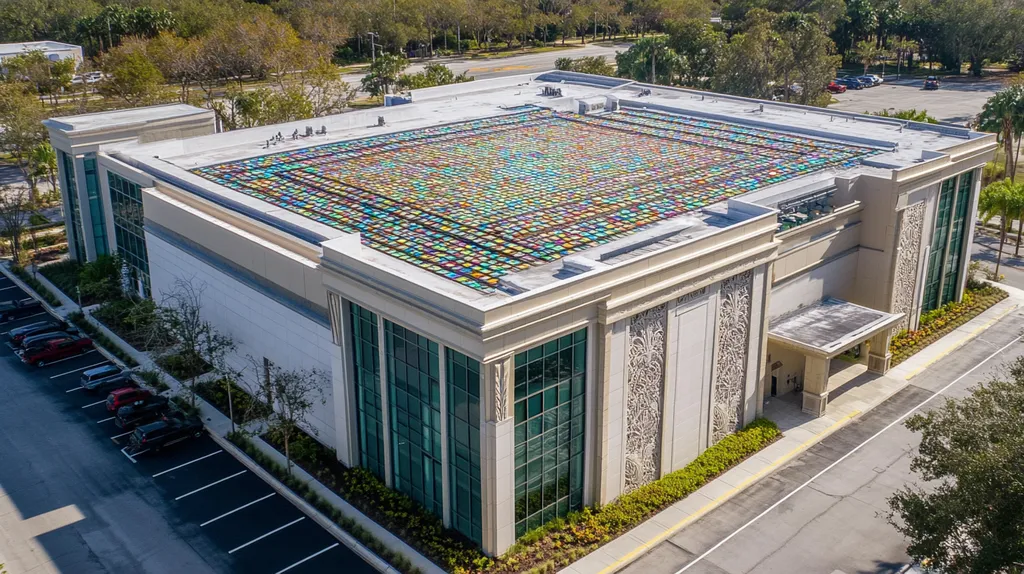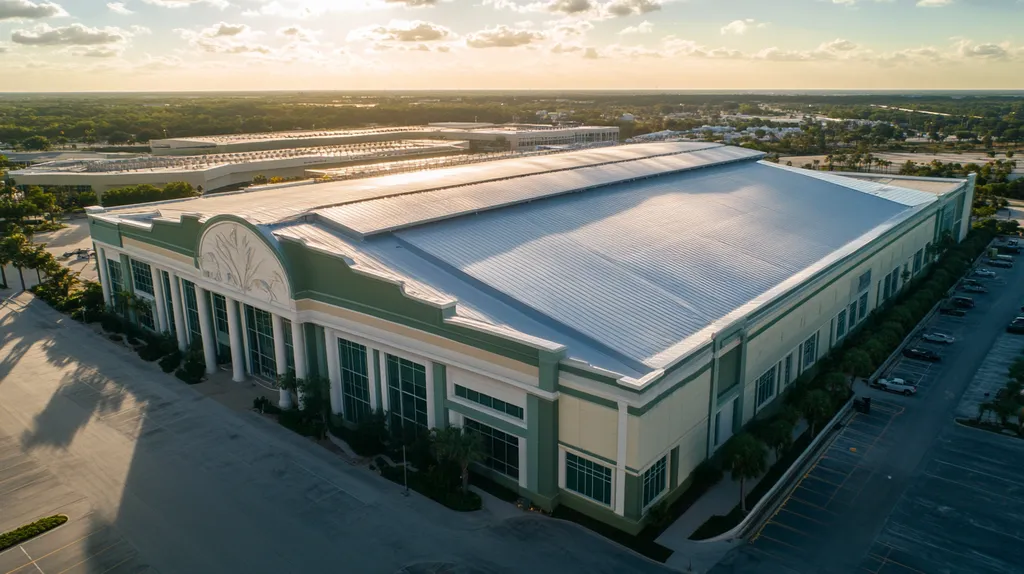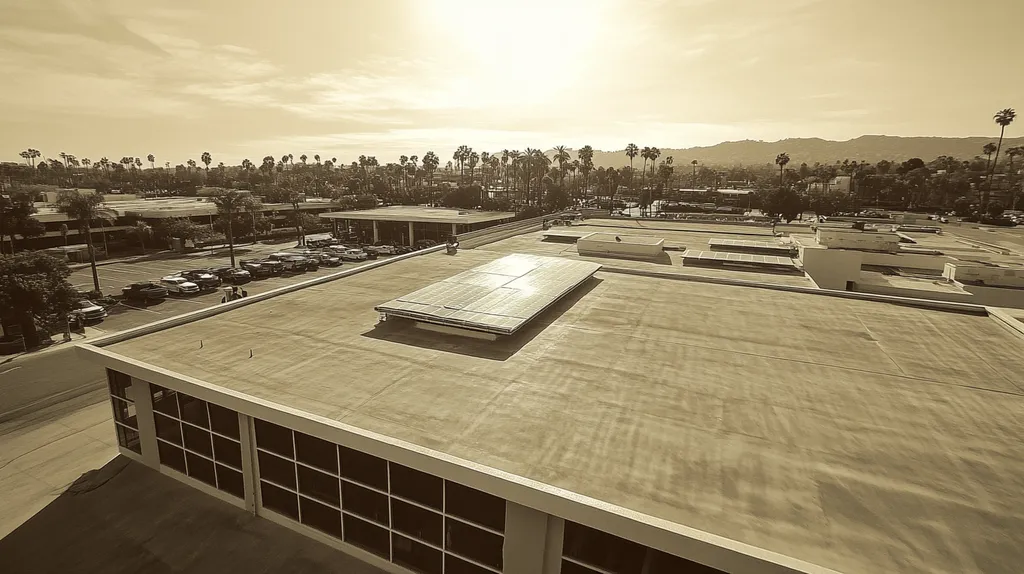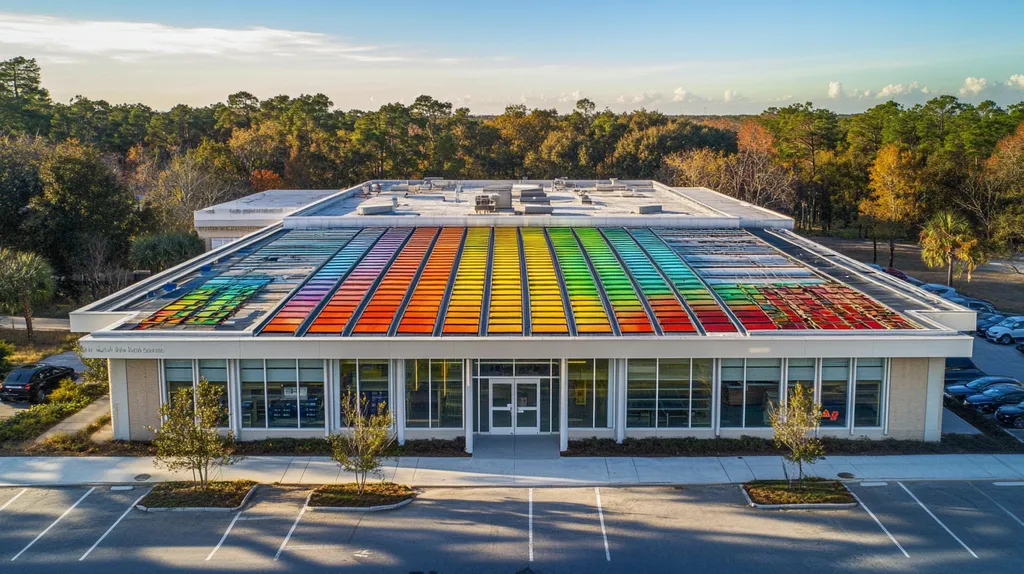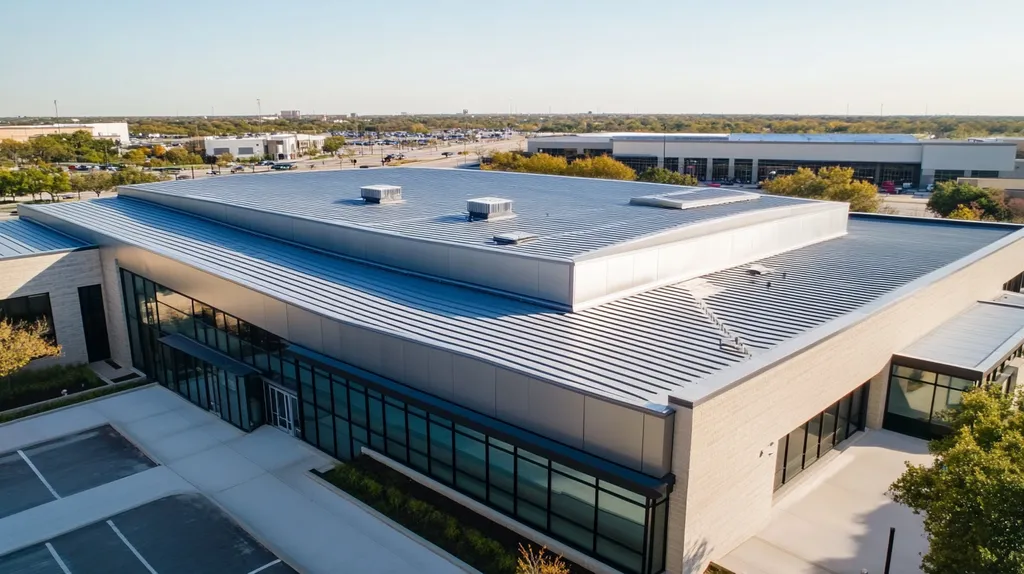Industrial roof coating failures cost facility owners over $2.5 billion annually in repairs and energy waste, with 40% of these failures traced to inadequate testing protocols.
The rise of advanced coating technologies has made proper evaluation more critical than ever, as choosing the wrong solution can lead to premature failure and significant operational disruptions.
This comprehensive guide examines the essential testing standards and evaluation protocols that ensure optimal performance, durability, and return on investment for industrial roof coatings.
SECTION 1: PERFORMANCE FACTORS
In the quest for cost-effective roofing solutions, facility managers must closely examine the performance of industrial roof coatings. A staggering number of roofing failures can be traced back to inadequate coating performance, making it imperative to grasp the essential performance factors. For instance, roofs suffering from low solar reflectance can see cooling expenses soar by as much as 30%. This section will explore critical elements like solar reflectance, durability, and energy efficiency that can significantly impact a facility’s bottom line.
Solar Reflectance and Thermal Emittance
Understanding solar reflectance and thermal emittance is crucial for optimizing industrial roof coatings. A high solar reflectance means the roof reflects sunlight rather than absorbing it. This can lead to a marked decrease in heat buildup, ultimately reducing energy consumption and costs.
Studies reveal that roofs exhibiting high solar reflectance can achieve significantly lower surface temperatures. This temperature drop not only enhances the lifespan of the roofing material but can also yield impressive savings on air conditioning bills—up to 15% in some cases. Furthermore, thermal emittance works hand-in-hand with solar reflectance, indicating how rapidly a material can release absorbed heat. Coatings that excel in both areas minimize heat absorption during the day, creating a more comfortable indoor environment.
For facility managers, evaluating reflectance and emittance values in potential coatings is vital. Opting for coatings with verified performance metrics ensures that they will maintain efficacy across various weather conditions.
Key Action Items
Durability and Weathering Resistance
Durability and weathering resistance play vital roles in the lifespan of industrial roofing systems. Coatings must endure harsh environmental conditions such as UV radiation, rain, and extreme temperatures. A coating that falls short in these areas can lead to premature degradation and escalating maintenance expenses.
Industry standards indicate that a durable coating should resist issues like cracking, peeling, and chalking. High-quality coatings can extend the life of a roof by as much as 20% compared to less robust alternatives. Additionally, strong weathering resistance ensures that coatings remain effective over time, protecting structures from leaks and damage, especially in regions with severe weather.
When selecting a coating, facility managers should prioritize performance tests that evaluate durability and weather resistance. A thorough analysis based on these essential criteria can guide managers toward choices that extend the life and reliability of their roof assets.
Key Action Items
Energy Efficiency and Cooling Capabilities
The importance of energy efficiency has become a paramount concern for facility managers. Roof coatings have a powerful impact on a building’s energy profile, enhancing its cooling capabilities. Implementing energy-efficient coatings can lead to remarkable reductions in energy consumption.
By acting as insulators, effective roof coatings lessen reliance on air conditioning systems. Research shows that energy-efficient coatings can cut overall energy use by up to 25% in commercial spaces. Additionally, using coatings designed for energy efficiency can qualify buildings for sustainability certifications, elevating market appeal while potentially lowering taxes or unlocking energy rebates.
It is essential for facility managers to scrutinize the energy performance ratings of potential coatings. Choosing advanced, energy-efficient products can result in long-term savings and improved operational efficiency.
Key Action Items
SECTION 2: FINANCIAL CONSIDERATIONS
Understanding the financial implications of industrial roof coatings is vital for effective facility management. While initial installation costs are critical, they are only part of the equation. A coating that appears economical at first might lead to substantial expenses in maintenance, repairs, and energy inefficiencies in the long run. Recent studies indicate that inadequate coatings can result in repair costs exceeding initial investments by up to 40% over time. A comprehensive evaluation of costs and potential returns is essential for making informed decisions.
Initial Installation Costs
The initial installation costs of industrial roof coatings significantly affect budget planning. Facility managers often face the temptation to select low-cost products that promise quick and easy application but may lack long-term durability. This approach can lead to premature re-roofing or repairs that derail overall financial goals.
It is important to weigh the overall value of higher-quality options that may have a larger upfront cost but promise better longevity and performance. Selecting coatings specifically designed for environmental resilience can deliver savings over time.
Facility managers should secure detailed quotes from multiple contractors, ensuring they include material costs, labor fees, warranties, and long-term performance guarantees. This transparency aids in effective budgeting and planning. Understanding what drives installation costs is key to avoiding regrettable financial missteps.
Key Action Items
Long-Term Maintenance and Repair Costs
While initial costs may attract immediate attention, long-term maintenance and repair expenses often play a more critical role in overall financial health. Regular inspections and maintenance are essential for prolonging the life of industrial roof coatings; neglecting these steps can lead to costly damage and repairs.
Facilities need to factor in ongoing maintenance costs, which can include aspects such as cleaning, sealing, and minor repairs. Some coatings may necessitate specialized care, adding further to expenses. As a result, budgeting should include these potential ongoing costs to manage financial resources effectively.
Investing in products that offer extended warranties is advisable, as a predictable lifespan aids in reliable budgeting over the roof’s lifetime. Maintaining an emergency repair fund can prevent resource depletion should unforeseen issues arise.
Key Action Items
Energy Savings and ROI Analysis
Energy efficiency greatly influences the financial assessment of roof coatings. Reflective coatings can significantly cut cooling costs by limiting heat absorption, with some studies showing potential energy savings of up to 30%. This can translate into substantial financial benefits over time.
Conducting a return on investment (ROI) analysis can provide facility managers with a clearer picture of cost-effectiveness for various coating options. By comparing the initial costs against projected energy savings, a more comprehensive understanding of total ownership costs emerges.
Including energy savings in the financial analysis can underline the long-term advantages of investing in higher-quality coatings. Such investments can yield returns that eclipse initial installation expenses, positively impacting the overall financial outlook.
Key Action Items
SECTION 3: COMPLIANCE REQUIREMENTS
Staying compliant with industrial roof coating standards is not just a regulatory formality; it is essential for safeguarding both facilities and their occupants. Failure to meet compliance requirements can trigger costly maintenance issues, safety hazards, and major legal repercussions. Alarmingly, research indicates that nearly 30% of industrial roofing products do not adhere to necessary testing standards, leading to extensive financial concerns in the future. Understanding these crucial standards and certifications is vital for making informed choices that bolster building longevity and reliability. This section delves into ASTM and CRRC standards, FM Global and UL certifications, and the significance of local building codes.
ASTM and CRRC Standards
The American Society for Testing and Materials (ASTM) establishes essential testing criteria for industrial roofing materials, covering critical aspects such as durability, weather resistance, and reflectivity. Adhering to these standards ensures that coatings are engineered to handle various environmental challenges, providing effective long-term protection for roofs.
Complementing ASTM, the Cool Roof Rating Council (CRRC) focuses specifically on how well roofing materials reflect heat. Coatings that comply with CRRC standards can lead to tangible energy savings by reducing cooling costs. Therefore, facility managers should require third-party testing to validate compliance with both ASTM and CRRC standards before selecting roofing products.
Trusting manufacturer claims without verification can be risky; independent testing offers crucial assurance of performance and longevity. By prioritizing compliance with ASTM and CRRC, property owners can protect their investments and avoid premature failure and associated costs.
Key Action Items
FM Global and UL Certifications
FM Global and Underwriters Laboratories (UL) offer rigorous certification programs that certify the safety and performance credentials of roofing materials. FM Global emphasizes the importance of fire resistance and wind uplift resistance, which are critical for protecting structures during extreme weather events. Coatings with FM Global certification can also help reduce insurance premiums due to their robust safety features.
Meanwhile, UL certification serves as a hallmark of quality, assessing various safety and performance attributes such as durability. A UL-certified coating is often preferred by facility managers when choosing materials, as it indicates reliability across different settings.
Both FM Global and UL certifications act as credible indicators of trustworthiness. These endorsements provide owners with confidence that the materials used have passed extensive testing. Such diligence helps mitigate risks and financial repercussions from potential non-compliance.
Key Action Items
Local Building Codes and Regulations
Local building codes and regulations are crucial components in maintaining compliance for roof coatings. Developed to enhance safety, durability, and energy efficiency, these codes vary by jurisdiction and must be adhered to strictly. Ignoring these local statutes can lead to hefty fines and delays in project completion.
It is imperative for facility managers to be aware of local regulations regarding roofing materials. Certain regions may mandate specific reflective properties to combat urban heat island effects, for example. Neglecting compliance not only threatens safety but can also hinder the operational capabilities of the facility.
Municipal inspections often require proof of adherence to local codes prior to approving new roof installations. This underscores the importance of early and thorough planning. Facility managers should engage with local building authorities to gain a complete understanding of pertinent requirements.
Key Action Items
SECTION 4: RISK MANAGEMENT
Effective risk management is essential when evaluating industrial roof coatings. A single material failure can lead to expensive water damage, disrupt operations, and escalate repair costs. Alarmingly, data from the National Roofing Contractors Association reveals that 60% of commercial roof failures originate from materials that fail to meet established standards. This section investigates the risks tied to material failure and leaks, safety hazards during installation, and the environmental liabilities that facility managers must address.
Material Failure and Leak Risks
The durability of an industrial roof coating is critical for safeguarding assets. Inferior coatings can result in severe leaks, leading to costly repairs and operational interruptions. If a poorly tested coating fails within its warranty period, it may void claims, leaving facility managers responsible for damages.
Coatings that undergo rigorous testing protocols tend to exhibit lower failure rates compared to those that do not. Ensuring that coatings are subjected to standardized testing reduces risks associated with material defects. This focus on proper testing not only prolongs the coating’s lifespan but also enhances the overall longevity of the roof system.
Facility managers should insist on coatings certified by respected testing organizations. Requesting third-party evaluations not only provides peace of mind but also diminishes future liabilities. By ensuring transparency in the testing process, building trust between property owners and manufacturers becomes easier.
Key Action Items
Safety Hazards During Installation
The installation of industrial roof coatings comes with several safety hazards that must be taken seriously. Risks such as slips, falls, and exposure to toxic materials during application can significantly threaten worker safety. Notably, around 30% of all workplace accidents occur during roofing operations.
To mitigate these risks, implementing proper safety protocols and providing comprehensive training are essential. Facility managers must ensure that contractors comply with OSHA standards, which outline the necessary safety measures to protect workers during installation. A strong commitment to safety not only prevents injuries but also minimizes potential liability claims.
Employing certified teams and adhering to recommended installation practices can greatly reduce safety hazards. Conducting risk assessments before installation helps identify potential dangers and allows for appropriate precautions to be taken. Additionally, performing regular safety audits during installation fosters a culture of safety.
Key Action Items
Environmental Impact and Liability
Considering the environmental impact of industrial roof coatings is crucial. Many coatings contain harmful chemicals that can seep into the environment, posing risks to local ecosystems. Regulatory bodies increasingly scrutinize the environmental compliance of roofing products, and non-compliance can lead to severe fines.
Facility managers should select coatings that conform to eco-friendly standards, minimizing harmful emissions and waste. Opting for products certified by recognized eco-labeling organizations can reduce liabilities connected to environmental damage.
Moreover, understanding local regulations is essential to avoid legal repercussions and protect a company’s reputation. Management should maintain thorough records of all coatings used and their compliance status to prevent any future complications.
Key Action Items
SECTION 5: OPERATIONAL PROCEDURES
Proper operational procedures are critical to the performance and durability of industrial roof coatings. Without strict adherence to testing and maintenance protocols, facilities can experience premature roofing failures, resulting in costly repairs and disruptions. Studies show that nearly 50% of commercial roofing problems arise from inadequate maintenance and testing. This section outlines essential procedures that guide facility managers in ensuring the effectiveness and longevity of roof coatings, covering sample collection and testing protocols, on-site measurement and inspection, and repair and maintenance scheduling.
Sample Collection and Testing Protocols
Establishing reliable sample collection and testing protocols is essential for accurate evaluations. Facility managers should schedule sampling intervals every three to five years, depending on environmental conditions and the type of coating. Utilizing standardized tools and methods helps ensure that samples accurately reflect the roof’s overall condition.
Upon collection, samples should be analyzed in accredited laboratories. Tests should measure key parameters such as adhesion strength, UV resistance, and moisture permeability. This data is vital for assessing both performance and longevity, offering insights that inform maintenance strategies.
Inaccurate sampling can lead to misguided decisions and unnecessary expenses. By implementing strict guidelines, facility managers can proactively address potential issues, enabling knowledgeable and timely interventions. Incorporating technologies like infrared thermography can further augment traditional methods by uncovering concealed problems that may go unnoticed during standard inspections.
Key Action Items
On-Site Measurement and Inspection
Regular on-site measurements and inspections are crucial for maintaining industrial roof coatings. Facility managers should conduct visual inspections at least every six months, concentrating on critical areas like seams, flashing, and pooling water. These checks help identify potential issues before they escalate.
Utilizing advanced tools such as moisture meters provides invaluable insight into conditions not visible to the naked eye. These tools can pinpoint areas needing immediate attention, allowing for proactive measures to rectify coating failures.
Thorough documentation during inspections is essential. Keeping detailed records of observations, photographs, and action steps taken can identify trends over time and substantiate necessary repairs. Engaging knowledgeable inspectors ensures that subtle signs of wear and degradation are easily recognized and addressed before they become costly problems.
Key Action Items
Repair and Maintenance Scheduling
Creating a proactive repair and maintenance schedule is vital for sustaining roof coating effectiveness. Delaying maintenance can lead to significant deterioration and shorter lifespan of the roofing system. A well-defined plan helps avoid costly emergencies and ensures operational continuity.
Facility managers should implement an annual maintenance schedule, outlining routine inspections, essential tasks, and repair requirements. Regular touch-ups and preventive measures can effectively combat premature aging.
Considering seasonal factors is also essential. For instance, scheduling inspections before winter can mitigate risks posed by snow and ice, while spring inspections can identify damage from winter weather. Investing in structured maintenance not only preserves coating integrity but also enhances energy efficiency and reduces operational downtime, making the roof a valuable long-term investment.
Key Action Items
SECTION 5: OPERATIONAL PROCEDURES
The longevity and effectiveness of industrial roof coatings hinge on proper operational procedures. Failing to adhere to rigorous testing and maintenance protocols can result in premature roof failures, leading to significant repair costs and operational disruptions. Research shows that a staggering 50% of commercial roofing problems arise from insufficient maintenance and testing. This section outlines key procedures that facility managers can implement to ensure roof coatings perform optimally, focusing on sample collection and testing, on-site measurements and inspections, and organized repair and maintenance scheduling.
Sample Collection and Testing Protocols
Implementing standardized sample collection and testing protocols is essential for accurate evaluations. Property managers should aim for sampling intervals of every three to five years, adjusting based on environmental conditions and coating types. Employing proper techniques with standardized tools ensures that samples accurately reflect the overall condition of the rooftop.
Upon collection, samples must be analyzed at accredited laboratories. Key tests should examine parameters like adhesion strength, UV resistance, and moisture permeability, as this data is crucial to assessing the roof’s performance and lifespan.
Neglecting reliable sampling can lead to misinformed evaluations and misguided maintenance decisions. By adhering to strict guidelines, facility managers can proactively address issues, leading to sound decision-making.
Leveraging technology such as infrared thermography can enhance the sample collection process, revealing hidden problems that won’t be visible during regular inspections. This comprehensive approach ensures that facility managers have a clear understanding of the roof’s condition.
Key Action Items
On-Site Measurement and Inspection
Regular on-site measurements and inspections are vital to maintaining industrial roof coatings. Facility managers should conduct visual inspections every six months, focusing on critical areas such as seams, flashing, and locations where water tends to pool.
Utilizing advanced tools like moisture meters enhances the inspection process, offering precise readings to detect issues not visible to the naked eye. These measurements help identify areas needing immediate intervention or indications of coating failures.
Thorough documentation during inspections is essential. Managers should keep detailed records of observations, including photographs and action steps taken. This data is invaluable for future inspections and aids in recognizing patterns that might signal larger issues.
Engaging experienced professionals for inspections can improve the accuracy of findings. A knowledgeable inspector can spot subtle signs of wear and recommend suitable solutions before minor issues escalate into costly repair projects.
Key Action Items
Repair and Maintenance Scheduling
Creating a proactive repair and maintenance schedule is crucial for preserving roof coating effectiveness. Delaying maintenance can lead to significant deterioration and reduce the overall lifespan of the roofing system.
Facility managers should establish an annual maintenance plan, outlining routine inspections, essential tasks, and repair requirements. Regular touch-ups can help prevent premature aging and failure of roofing materials.
Additionally, seasonal considerations are important. Inspections before winter can catch vulnerabilities that snow and ice may exacerbate, while spring inspections can address any damage incurred during harsh winter conditions.
Investing in structured maintenance not only protects the coating’s integrity but also boosts energy efficiency and minimizes operational downtime. A well-maintained roof serves as a valuable long-term investment, reducing the risk of extensive repairs down the line.
Key Action Items
Moving Forward
With over $2.5 billion lost annually to industrial roof coating failures, implementing rigorous testing standards is no longer optional – it’s imperative for operational sustainability.
The comprehensive evaluation protocols outlined in this guide provide facility managers with a clear roadmap for selecting and maintaining high-performance roof coatings that meet critical industry standards.
From ASTM compliance to environmental impact considerations, each testing parameter plays a vital role in ensuring long-term roof protection and optimal returns on investment.
As coating technologies continue advancing, staying current with testing standards will become even more crucial, with experts projecting that proper evaluation protocols can extend coating lifespans by up to 40% while reducing energy costs by 25-30%.
The future of industrial roofing depends on embracing these essential testing standards – making them the cornerstone of every facility’s maintenance strategy.
FREQUENTLY ASKED QUESTIONS
Q. What performance factors should I evaluate for my commercial roof?
A. It’s essential to assess solar reflectance, durability, and energy efficiency to optimize performance. High solar reflectance can lower cooling costs by reducing heat buildup, while durability improves the roof’s longevity. Evaluating these factors helps facility managers make informed choices that positively affect their bottom line.
Q. How do installation costs of industrial roof coatings affect budgeting?
A. Initial installation costs are just one part of the budgeting puzzle. A cheaper coating may incur higher maintenance and repair costs in the long run. It’s crucial to evaluate the long-term value of higher-quality options, ensuring detailed quotes are obtained from contractors for a comprehensive financial overview.
Q. What compliance requirements should I consider for my industrial roof?
A. It’s vital to adhere to ASTM and CRRC standards for durability and reflectivity. Additionally, ensuring compliance with FM Global and UL certifications helps protect your investment, while alignment with local building codes prevents legal issues. Verification through third-party testing adds an extra layer of assurance.
Q. How can I mitigate the risk of material failure in industrial roofs?
A. Selecting coatings that adhere to rigorous testing standards significantly reduces the likelihood of material failure and leaks. Ensuring thorough, third-party evaluations provides peace of mind and helps prevent costly repairs due to inferior product performance.
Q. What operational procedures are essential for roof coating longevity?
A. Implementing strict sample collection and testing, conducting regular inspections, and maintaining a proactive repair schedule are key. These operational procedures help identify and rectify issues early, preventing costly failures and extending the life of your industrial roof coatings.
Q. How can energy efficiency in roof coatings save my facility money?
A. Energy-efficient roofing solutions can drastically cut cooling costs by reflecting heat. Studies indicate these coatings can reduce energy usage by up to 25%. This not only lowers utility expenses but can also enhance your building’s market appeal and eligibility for sustainability certifications.
Q. What are the environmental considerations for industrial roof coatings?
A. Facility managers must prioritize eco-friendly coatings that minimize harmful emissions. Regulatory scrutiny is increasing, so selecting certified products can help avoid compliance issues and potential fines. Maintaining records of environmental compliance ensures that your facility meets local and national standards.

